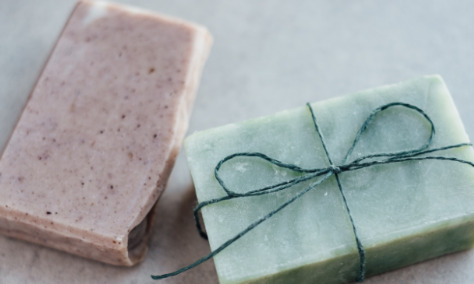Soaps are one of the most popular products in the world. From cleaning products to body wash, they’re everywhere. But how do soapmakers make them? In this blog post, we’re going to take a look at the entire soapmaking process from start to finish. From raw materials to final products, read on to learn everything you need to know about soapmaking. You may be surprised at just how simple and straightforward it is!
How Soaps Are Made: Chemical Composition
Soaps are a type of surfactant. Surfactants are chemicals that lower the surface tension of water, making it possible for it to mix with other liquids more easily. Soaps are made from a mixture of fats and water. The fats are melted and then mixed with the water until the desired consistency is reached. Additives such as lye or glycerin can be used to change the soap’s characteristics, such as its strength or how long it will last before fading.
How Soaps Are Made: The Water Process
Soaps are made from water, lye and oil. The basic water-lye process is as follows:
1. Use a pot to bring the water to a boil.
2. Add the lye and stir until it is dissolved.
3. Reduce the heat and let the mixture simmer for about 15 minutes, or until it has thickened slightly.
4. Turn off the heat, add the oil and stir until it is fully mixed in.
5. Pour the soap into molds or containers and let it cool before using.
How Soaps Are Made: The Lye Process
The soap-making process begins with mixing together an alkali (sodium hydroxide, or lye) and a fatty substance like oil or tallow. The alkali reacts with the fatty material to create soap molecules. These molecules are then combined with water to form a bar of soap.
The soap-making process begins with the extraction of oils from plants. Glycerin and other plant saponins are extracted from the plant’s leaves, bark, or roots. These oils are then mixed with a base such as sodium hydroxide to create soap.
How Soaps Are Made: The Fats and Oils Process
Soap is made from three main ingredients: fats, oils, and water. Together, these substances create a bar of soap that can be used on your skin. Fats and oil are what make up the solid portion of the soap while water is what makes up the liquid portion.
Baking soda is also a key ingredient in soap because it helps to neutralize pH levels in the soap mixture. This allows the soap to lather properly and keep your skin clean while you shave or bathe.
How Soaps Are Made: The Emulsifying Agent Process
Soaps are created through a process called emulsification. In order for soap fat and water to mix and create a suds-like mixture, an emulsifying agent is needed.
Soaps are made by mixing an oil and a liquid detergent together to create a suspension. This suspension is then emulsified with an emulsifying agent, which creates a creamy substance. Soaps are usually composed of three ingredients: water, oil, and an emulsifier. The types of oils used in soapmaking can be divided into two categories: fatty acids and alkanes. Fatty acids are fats that contain carbon atoms in their molecules, while alkanes are hydrocarbons with no carbon atoms.
The first step in soapmaking is to heat the oil and water mixture until the temperature reaches 100 degrees Fahrenheit. This high temperature breaks down the impurities in the oil, freeing up its fatty acids. Once the oil has melted, it is added to the water mixture. The soapmakers use a technique called “vigorous stirring” to help prevent clumps from forming.
Next, an emulsifying agent is added to the mixture. There are many types of emulsifiers available on the market, but they all work in essentially the same way: they help suspend small droplets of one substance (in this case, oil) in another substance (in this case, water). The most common type of emulsifier is glycerin monostearate, but there are also ethoxylated glycerin monostearates , sorbitan esters , nonionic surfactants , and alkylphenols .
How Soaps Are Made: The Fragrance Ingredient Process
Soaps are made by combining a fatty acid, such as stearic acid, with a water soluble soap (sodium hydroxide) and an emulsifying agent. The fatty acid is melted and then added to the soap solution. Once combined, the soap solution is heated until it reaches a temperature where it will liquefy the fat. This liquid soap is then poured into molds or other containers where it will harden.
If you’re like most people, your first thought of soap is probably a bar of sudsy goodness. But how does that bar of soap actually get made? In this article, we’ll take a look at the fragrance ingredient process used to create soap.
First, raw materials are gathered and imported into the soap-making facility. These ingredients may include oils, fats, and other ingredients necessary for creating a quality bar of soap. Once the raw materials have arrived, they are combined and melted down in order to create the desired formula. This mixture is then poured into molds or drums and allowed to cool.
Once the bars have cooled, they are cut into various shapes and sizes and packaged according to customer demand. Finally, labels identifying the product’s ingredients and maker are affixed to each bar.











